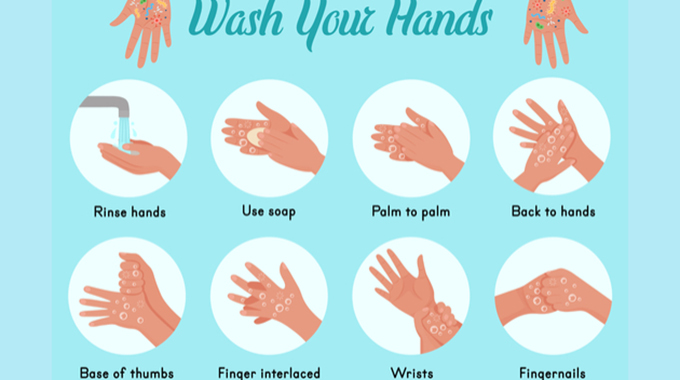Hand hygiene critical in disease control

Roselyne Sachiti Features, Health and Society Editor
Since time immemorial, hand hygiene is one of the non-pharmaceutical interventions recommended to prevent the spread of germs, including stubborn ones that are resistant to antibiotics and are becoming harder to treat.
In this era of the highly infectious Covid-19, proper washing of hands with soap and clean running water has been recommended as one of the best non-pharmaceutical prevention measures.
Sanitising hands is also being recommended to prevent spread of the novel virus.
Good hand hygiene has also proven to prevent the spread of communicable diseases like cholera and typhoid.
For healthcare workers who regularly come into close contact with patients, hand washing is one of the practice commandments.
In kicthens, restaurants and other food outlets, handwashing is critical to ensure food does not get contaminated during preparation and when serving.
Yesterday, Zimbabwe joined the world to commemorate the 2021 Hand Hygiene Day.
According to the World Health Organisation (WHO), on May 5 each year, Hand Hygiene Day mobilises people around the world to step up adherence to hand hygiene in health care facilities.
This protects health care workers and patients from infections.
The day came at a time the WHO latest global survey on implementation of national infection prevention and control programmes highlights the urgent need to reduce inequalities in the availability of good hand hygiene and other infection prevention and control measures between high and lower income countries.
WHO also announced that a new online monitoring portal will help countries identify and address gaps.
According to WHO, this first ever IPC monitoring portal is a protected online platform for countries to collect data in a standardised and user-friendly manner and download their situation analysis following data entry along with advice on areas and approaches for improvement.
“This is a serious challenge at any time, but Covid-19 has dramatically demonstrated just how important good hand hygiene practices are in reducing the risk of transmission, when used as part of a comprehensive package of preventative measures,” WHO explained in a statement to mark the day.
WHO further emphasised the importance of good hand hygiene which is also vital in preventing any infections acquired in health care.
Furthermore, the spread of antimicrobial resistance and other emerging health threats can be curbed through proper hand hygiene.
According to the latest WHO global survey, infection acquired during health care delivery is a major global health problem.
“But patients in low and middle income countries are twice as likely to experience this as patients in high-income countries (15 percent and 7 percent of patients respectively); the risk in intensive care units (ICU), especially among newborns, is between 2 and 20 times higher,” said WHO.
“One reason for this is that in some low-income countries, only one in 10 health workers practices proper hand hygiene while caring for patients at high risk of health care-associated infections in ICU – often because they simply do not have the facilities to do so.”
The survey points out several challenges in maintaining good hand hygiene.
These include a lack of financial resources and proper infrastructure.
The survey also cites the 2020 WHO Global progress report on WASH in health care facilities: Fundamentals first report, which reveals that globally, one in four health care facilities do not have basic water services and 1 in 3 lack hand hygiene supplies at the point of care.
Furthermore, according to the WHO national survey on 88 countries, the level of progress of hand hygiene and infection prevention and control programmes, especially regarding actual implementation, was significantly lower in low than in middle and high income countries.
“In 2018, only 45 percent of low-income countries had a functional national IPC programme compared to 53-71 percent of middle and high-income countries and dedicated budget to support it was available in only 5 percent of low-income countries as opposed to 18 and 50 percent of middle and high-income countries,” said WHO.
The survey further points out that while national guidelines on IPC practices existed in 50 percent of low-income countries and 69-77 percent of middle and high-income countries, only 20 percent and 29-57 percent had implementation plans and strategies in low, and middle and high-income countries respectively.
Overall, only 22 percent of all countries monitored implementation roll-out and impact.








Comments